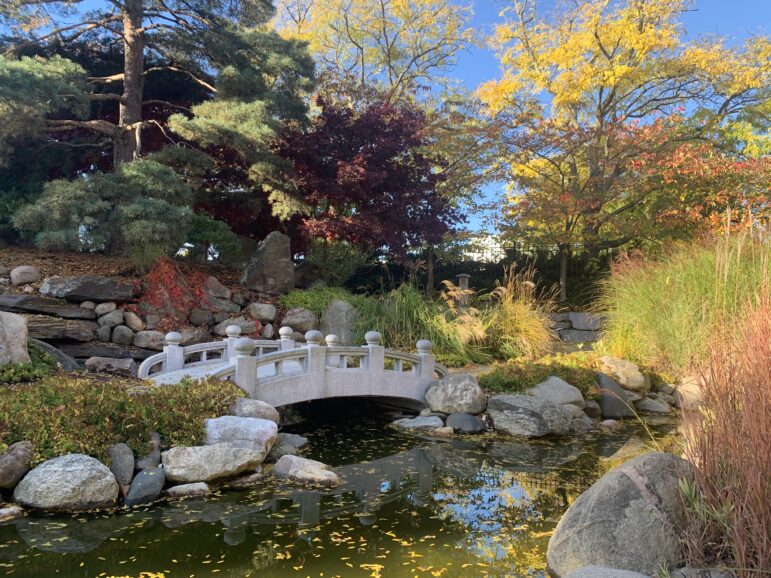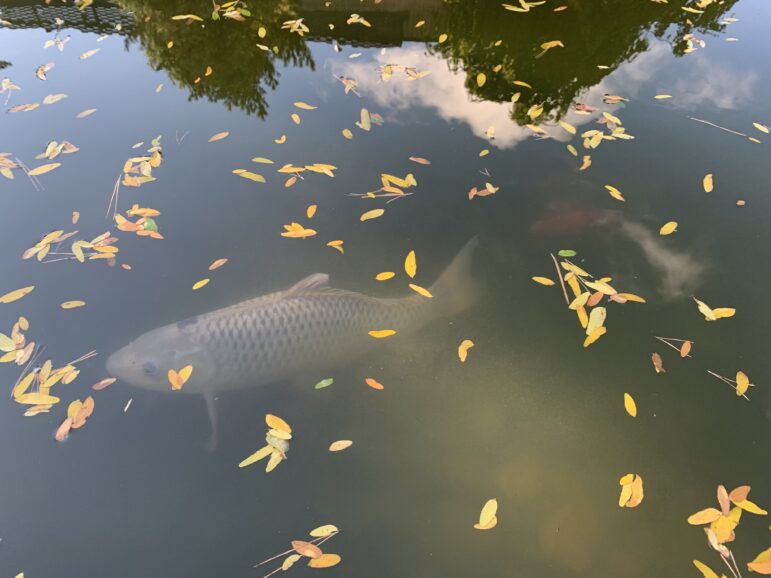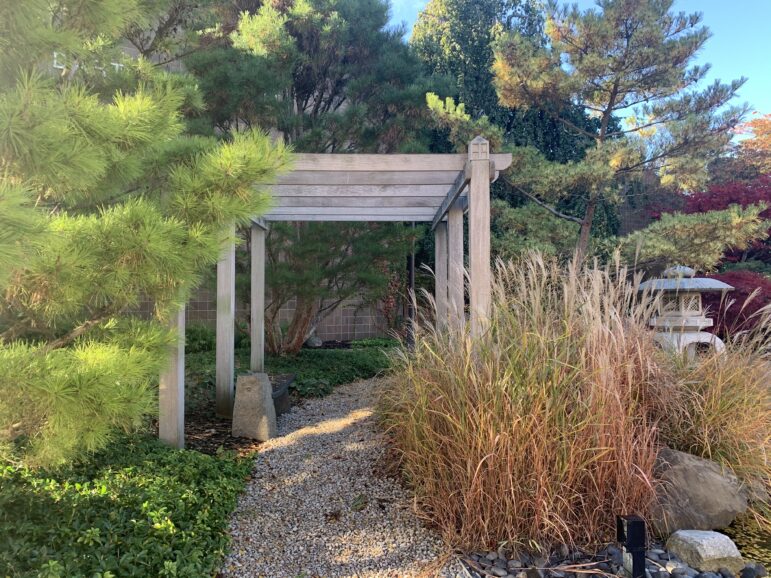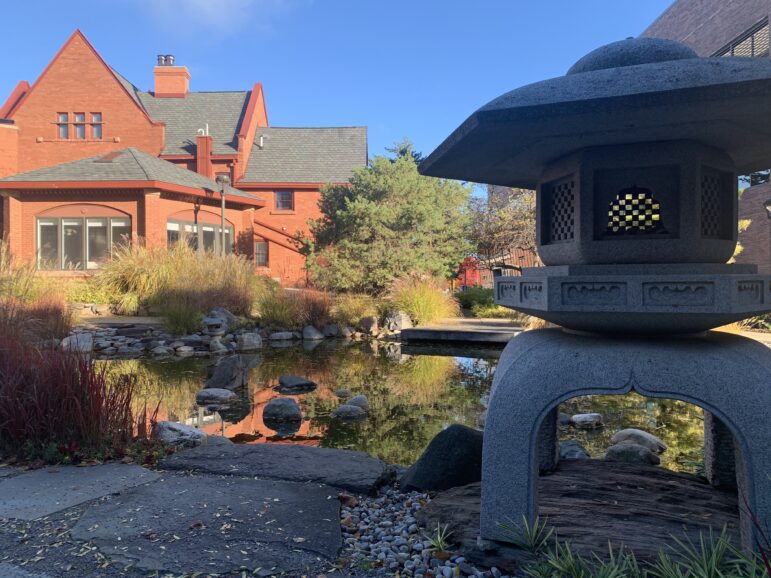In the middle of downtown’s Lansing Community College campus there lies the Shigematsu Memorial Garden, a place where one can escape the hustle and bustle of the city while experiencing Japanese culture.
The Shigematsu Memorial Garden’s construction was completed in 2006 and was created in honor of the late Megumi Shigematsu, who was a former president of Biwako Kisen Co. and a sponsor of LCC programs in Japan.
“It’s always been one of my favorite places on our campus,” said David Siwik, project manager and a history faculty member at LCC. “It’s a quiet place in the middle of the day to go up to and take a quick little walk around the pond or to just sit there and relax for a minute. You forget that you’re right in the middle of downtown Lansing.”
The Shigematsu Memorial Garden contains many elements of traditional Japanese gardens such as lanterns, a moon viewing dock and a koi pond. Siwik said the foliage within the garden is also indicative of what you may find in a Japanese garden. The plants were selected not only to give visitors an authentic experience but to survive Michigan’s climate.
“Any garden definitely has to be tended and that one’s no exception,” Siwik said.
Siwik said the two biggest challenges when it comes to the upkeep of the garden are tending to the plants during the growing season and preserving the garden in a way that does not damage it during the winter. The koi pond requires special upkeep during the winter as it is shallow (about 4 feet at its deepest) and would typically freeze all the way through. To preserve it, staff either keep it aerated throughout the winter so the fish can survive or move the fish to an aquarium and reintroduce them in the spring.
“The Japanese garden is really intended to get people to pause and reflect and have a moment of spiritual connection,” Siwik said. “It’s very tied into Eastern philosophy and Eastern religions of that part of the world where spiritualism is something that one should appreciate at all times and not being devoted necessarily to just worship in a particular place. The garden invokes serenity and sort of an order of the world both of the higher realm but also of what humankind can create by taking the natural world and rearranging it in a way that makes sense.”



